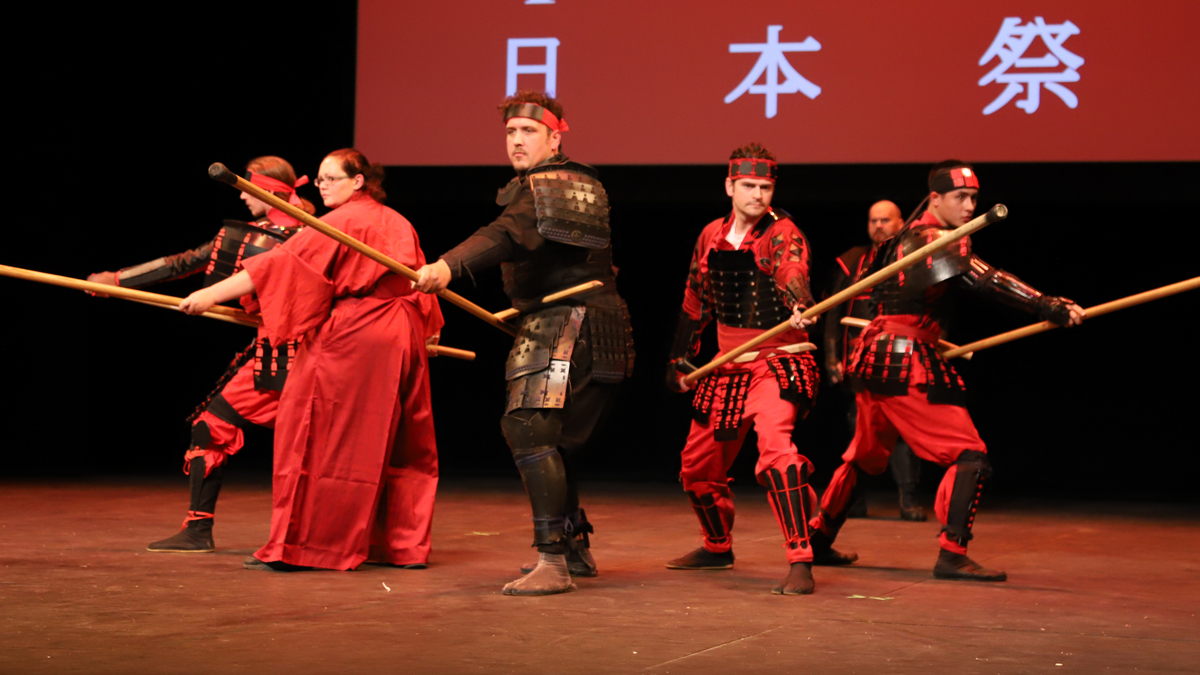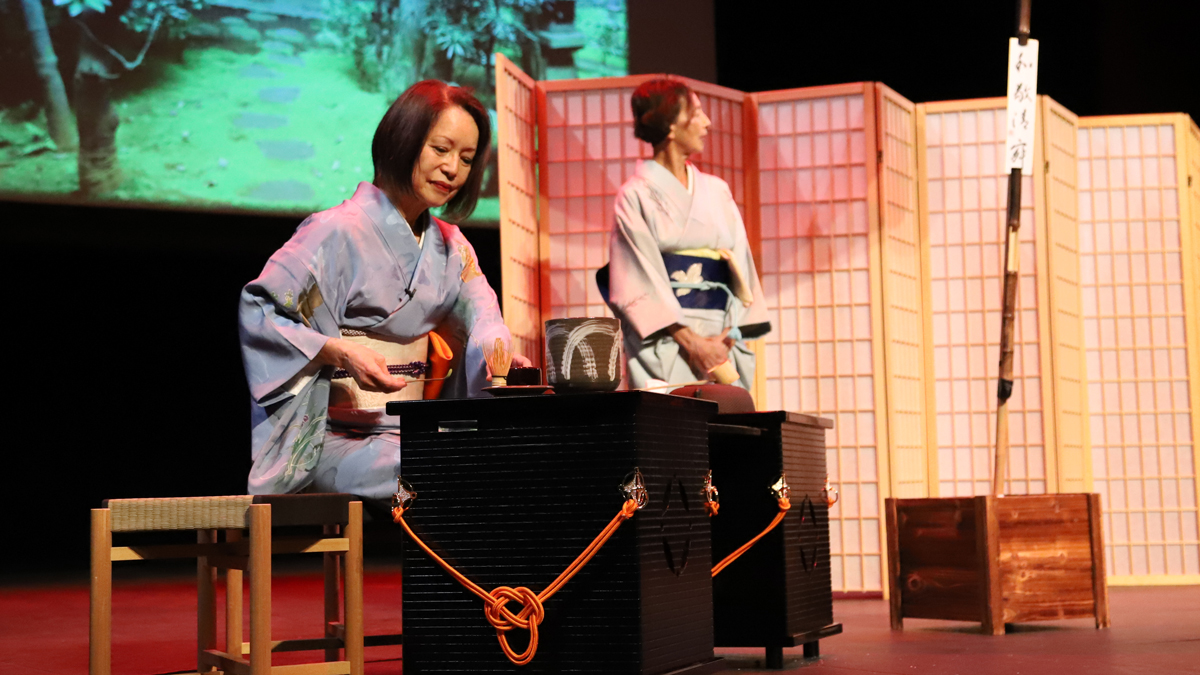Demonstrations

Martial Arts Demonstrations
3:00 pm–5:35 pm • Polsky Theatre
Learn about these martial arts and see experts demonstrate the art. Martial arts workshops can be viewed on the workshops page.
3:00 pm // Introduction – John Drakey
3:10 pm // Kansas City Kendo Club – Kendo – John Drakey
3:30 pm // Tessenjutsu – Martial Arts Fan – Lori Bushner
3:45 pm // Karate – Japan Karate-Do Ryobu-Kai – Fabio Rodriquez
4:05 pm // Tosa No Shugyo Dojo – Sōjutsu – Tora Lawson
4:35 pm // Aikijuku Dojo – Aikido – Neil Segal
4:55 pm // Misogi-Ryu – Karate – John Hileman
5:20 pm // Closing and Thanks – John Drakey

Tea Ceremony Demonstration: Omote-senke
Yoko Hiraoka
11:00 am • Polsky Theatre
Attendees will have the opportunity to witness, and several attendees will have the opportunity to participate in, a traditional Japanese Tea Ceremony. The Tea Master who will perform this beautiful and special ceremony is Ms. Yoko Hiraoka who is a native of Kyoto, Japan and who currently resides in Colorado. Ms. Hiraoko will perform the Tea Ceremony dressed in a formal Kimono. Attendees will all have the opportunity to learn about the history and practice of the Tea Ceremony.
This is a special opportunity to see the traditional Japanese Tea Ceremony performed by a Japanese Tea Master whose training started in Kyoto as a young child.
Yoko Hiraoka began her study of the Japanese Tea Ceremony at the age of 14 in the Ura-senke style, later moving to the Omote-senke tradition in Kyoto Japan. Her core training took place in Shõgaku-ji Temple in Hyogo prefecture. She is an Omote-senke licensed teacher with the tea name: ‘Sôrei’, meaning ‘Clear Awareness’.
She now teaches tea from her home in Colorado where she has a traditional tea garden and teahouse named ‘Busshin-an’ (House of Buddha’s Heart). She is a senior master performer/teacher of classical Koto, Biwa, and Shamisen music.
Tea Ceremony Demonstration: Edo-senke
Yuri and Asuka Iijima
12:15 pm • Polsky Theatre
A few members of the audience will be invited to join Yuri and Asuka on stage to experience and learn first-hand the elements and steps of the Japanese tea ceremony. All attendees will gain interesting insights that will help to de-mystify this cultural practice. Tea gatherings are simply honored moments to spend with friends, to pause, and be mindful of how we experience our space through our senses.
Mrs. Yuri and Ms. Asuka Iijima are Tea masters from Maebashi, Japan, who are trained in the Edo-senke school of Tea Ceremony. Yuri has studied tea ceremony for 40 years and is a licensed tea master holding a Shinnodaisu certification. In addition to her tea training, Yuri holds licenses for Ikebana (flower arranging) in the Sougetsu school and is also a Kimono specialist. She is a retired Junior High art teacher and a few years ago, opened a school for Japanese cultural arts called Nagomi-ryu Bunkadou, located in Isesaki, Japan (Springfield, Missouri’s sister city). She provides instruction in Tea, Flower arranging, wearing Kimono, watercolor, and other arts.
Asuka has studied tea ceremony for 25 years and has a master certification. She will be assisting Yuri during the tea ceremony. Dianne Daugherty, JCCC Adjunct Professor of Japanese will assist in providing explanations in English.

Kimono Demonstration
Yoshiko yamanaka and Miyako Fraley
1:15 pm • MTC 234
Learn all about traditional Japanese Kimono and Yukata. Also, you will be able to see them demonstrate what is involved in putting on a Kimono or Yukata. They will show a wedding kimono, a two piece casual kimono and a men’s kimono.
The Japanese Kimono is deeply integrated into Japanese history and culture. After a decline in popularity following the Meiji Restoration and WWII, the kimono is now making a resurgence in popularity in Japan and around the world. While dressing their models, Yoshiko Yamanaka and Miyako Fraley will provide instruction and interesting details about how to wear the kimono.
Kimono Demonstration
yuri and asuka iijima
3:45 pm • MTC 234
The history of a kimono-like garment in Japan extends back to the Heian period (794-1192). It took the name “kosode” meaning small sleeves by the Edo period (1603-1868). The name “kimono” meaning wearing thing became the word of choice that stuck from the Meiji period (1868-1912) onward. As a quintessential representation of Japanese culture with a rich history, the kimono illustrates many faces of the Japanese identity.
In Yuri and Asuka’s demonstration, you will see a demonstration of how to wear four different types of kimono:
- Komon for female – a casual every-day type kimono
- Houmongi for married female – formal kimono
- Kimono and Hakama for men – formal wear for men
- Furisode – for unmarried female – often worn for coming of age (Seijin)
